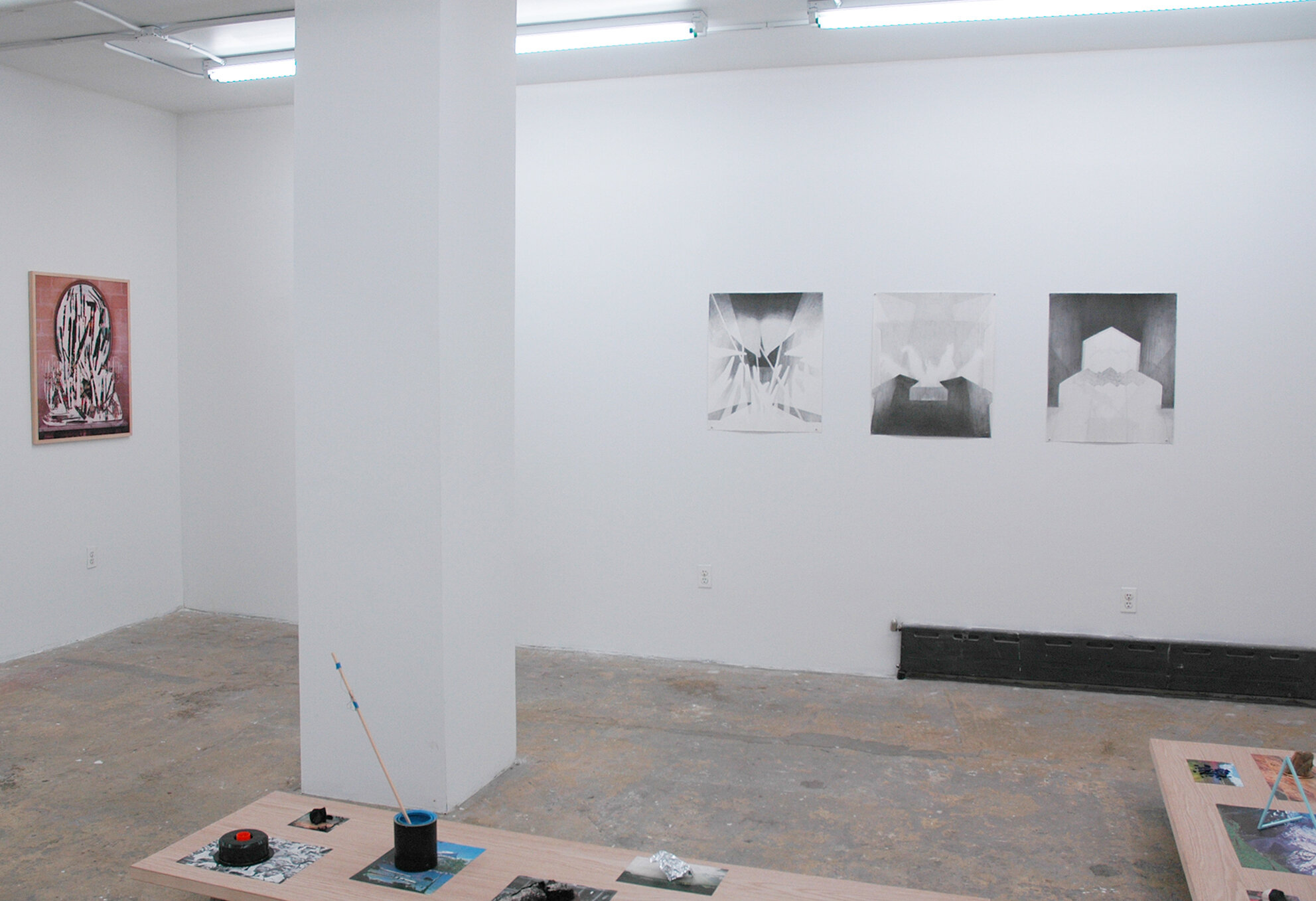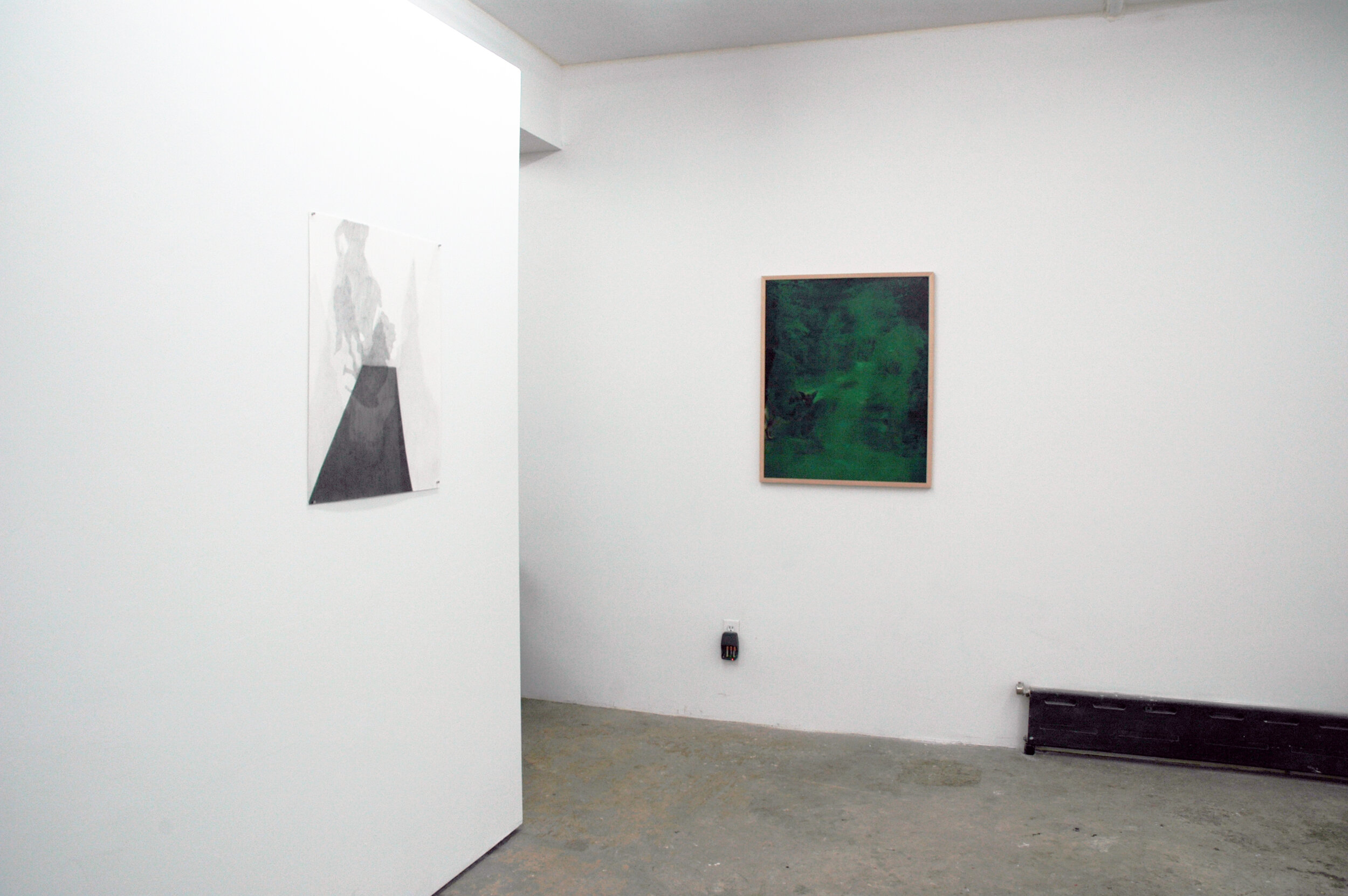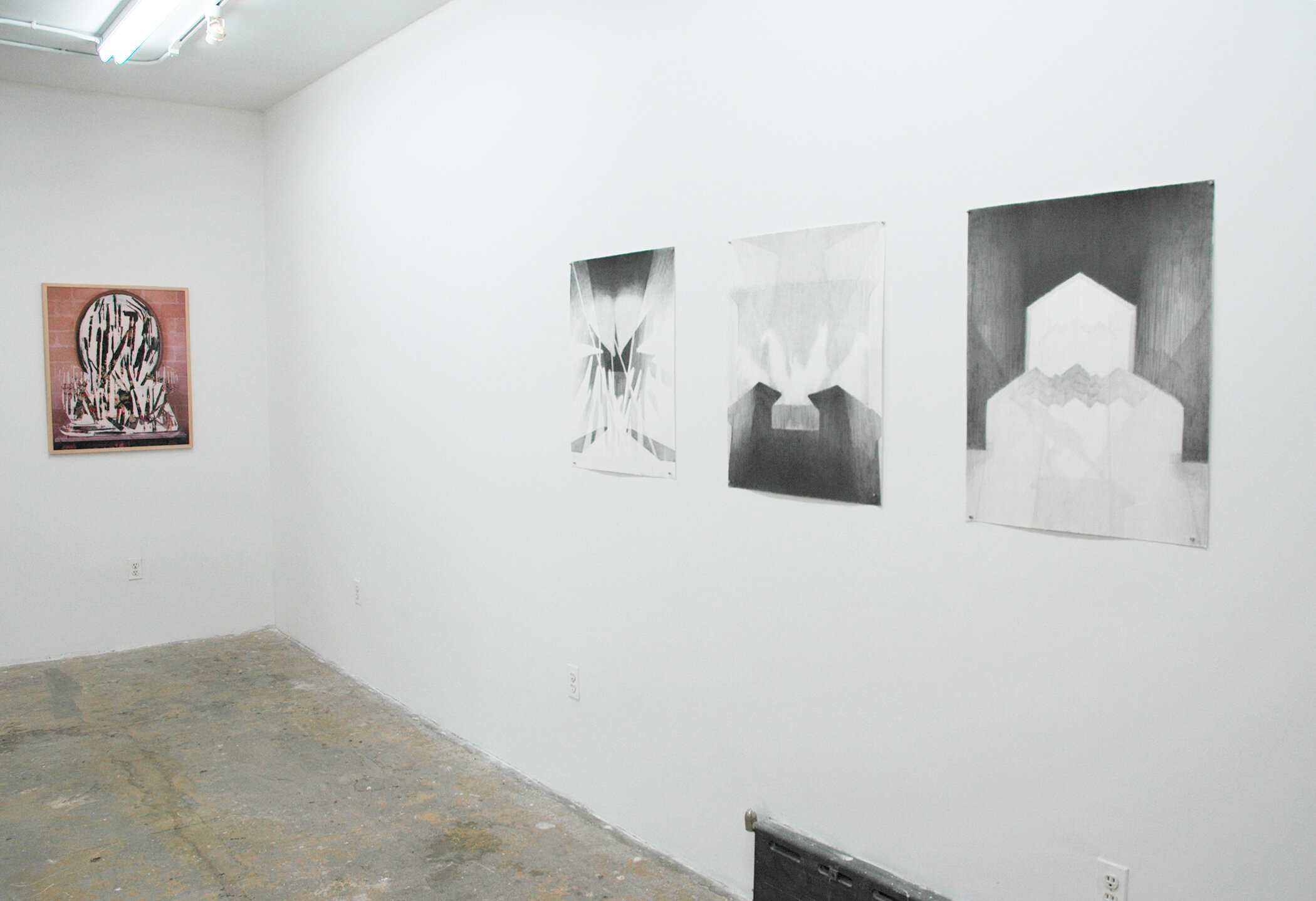Adam Hayes/Rusty Shackleford
October 27 – December 9, 2012
Cindy Rucker Gallery is pleased to present new works by Newark-based artist Adam Hayes and Chicago-based artist Rusty Shackleford in its inaugural exhibition.Working within the traditions of drawing, painting and readymades, both artists have found unique ways to usurp the idyllic, by either altering found pastoral photographs or reinterpreting classical European statues.
Adam Hayes (b. 1979, Kansas) creates works that are simultaneously specific and vague. His newest series draws upon monument imagery from a recent trip to Europe. Alternating between a soft touch and a hard pull, his linear pencil marks sketch silhouettes of stately statues erected in commemoration of a hard fought victory or the mythological symbol of a city. The reference is direct; without the context, the viewer accepts it as a non-specific statue one can encounter anywhere. Hidden within these rather baroque compositions is a symmetrical geometry that drives the viewers’ subconscious eye toward the statue’s shadowed triumph. Holding true to his sources, or as a deeper critique of the concept, he willingly reveals this grandeur to be simply a flimsy promise, a notion that lies just out of our grasp, that if we were to attain it, it would dissolve in our hands. The drawings hint of something concrete and extravagant, yet deliver nothing but a thin veil.
Rusty Shackleford (b. 1978, Alabama) creates collages, sculptures and arrangements that investigate the relationship between image and form. Working with images primarily from found magazines, Shackleford ravages them with swaths of paint or objects, reducing the sculptural by creating Lambda prints, leaving only the smooth surface of a photograph for his viewer. While denying his viewer texture, he also denies them access to the full image, obliterating part or all of it. In doing so, he highlights the interior qualities of the image, be it the unrecognized geometry, the flow of the composition, or its innate connection to seemingly unrelated found objects. Shackleford’s work is not about closing off, it’s about access.






